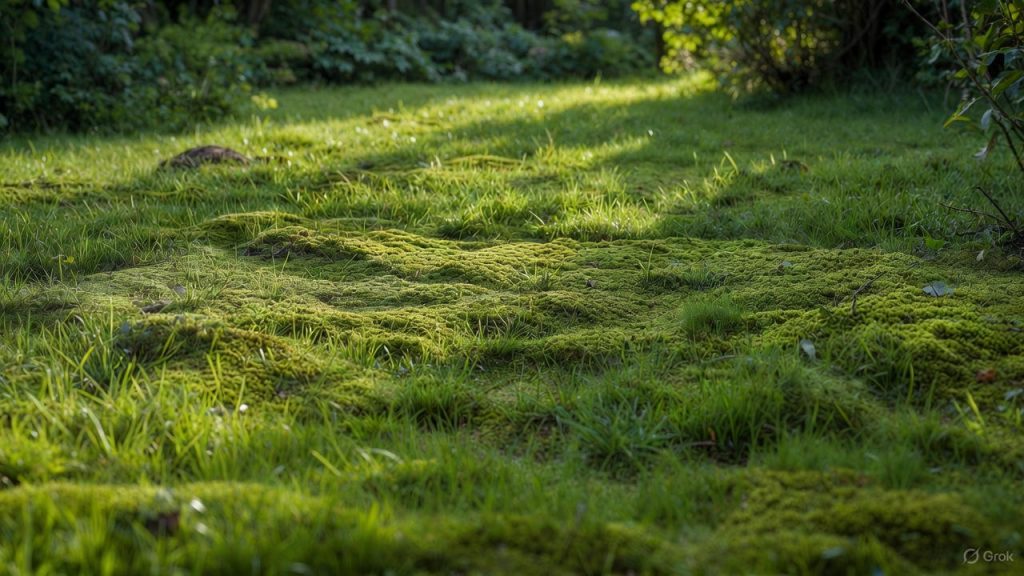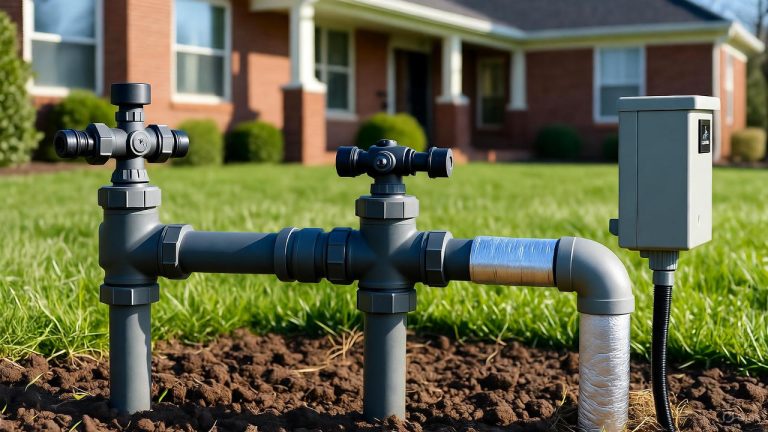How to Get Rid of Moss from Grass?
You walk outside one morning and notice green patches spreading across your lawn. At first glance, you might think it’s just new grass growth. But when you look closer, you realize moss has taken over sections of your yard. This fuzzy invader doesn’t belong there, and it’s stealing space from your beautiful grass.
Moss in lawns is a common problem that frustrates homeowners everywhere. The good news? You can win this battle and restore your lawn to its former glory. This guide will show you exactly how to eliminate moss and keep it from coming back.
Why Moss Grows in Your Lawn
Before you start removing moss, you need to know why it’s there in the first place. Moss doesn’t just appear randomly. It thrives in specific conditions that your grass doesn’t like.
Moss loves shade. Those areas under trees or on the north side of your house create perfect growing conditions for moss. When grass struggles to get enough sunlight, moss moves in and takes over. Most grass types need at least four to six hours of direct sunlight daily. Anything less opens the door for moss invasion.
Compacted soil is another major culprit. When soil becomes hard and dense, grass roots can’t penetrate deeply. Water sits on the surface instead of soaking in. Moss actually prefers these compact, poorly drained areas. Your grass suffers while moss flourishes.
Acidic soil creates an environment where moss feels right at home. Most lawns do best with a pH between 6.0 and 7.0. When soil pH drops below 6.0, grass weakens and moss gains an advantage. Testing your soil pH should be your first diagnostic step.
Poor drainage keeps soil wet and soggy. Moss doesn’t mind wet feet, but grass roots will rot in constantly moist conditions. Low spots in your yard collect water and become moss magnets. Clay-heavy soil holds water like a sponge, creating another invitation for moss growth.
Thin or weak grass coverage leaves bare spots that moss quickly colonizes. When grass can’t grow thick and healthy, moss fills the gaps. This often happens from over-mowing, disease, insect damage, or simply using the wrong grass variety for your climate.
The Best Time to Remove Moss
Timing matters when you’re fighting moss. You can technically remove moss any time you see it, but certain seasons give you better results.
Late spring offers ideal conditions for moss removal and lawn recovery. Temperatures are mild, and grass enters its peak growing season. When you remove moss in spring, your grass has months of favorable weather to fill in the bare spots. The soil is workable, and you can address underlying issues like compaction and drainage.
Early fall is your second-best window. Grass experiences another growth spurt as temperatures cool. You still have time to overseed and establish new grass before winter. The combination of warm soil and cooler air temperatures helps grass grow strong roots.
Avoid moss removal during summer heat or winter cold. Summer stress makes it harder for grass to recover after you disturb the soil. Winter conditions slow grass growth to a crawl, leaving bare patches vulnerable to erosion and weed invasion.
Manual Moss Removal Methods
Sometimes the best approach is getting your hands dirty. Manual removal works well for small moss patches and gives you immediate results.
Raking is your first line of defense. Use a spring-tine rake or a specialized dethatching rake to pull moss up from the soil surface. Rake vigorously in multiple directions. The moss will come up in clumps. You’ll be surprised how much moss you remove with this simple technique. Bag up all the moss debris and dispose of it. Don’t leave it on your lawn or add it to your compost pile, as moss can regenerate from tiny fragments.
A stiff brush works for stubborn moss in small areas. Scrub the moss patches with firm pressure. This loosens the moss’s grip on the soil. Follow up with raking to collect the dislodged moss.
Power raking or scarifying takes manual removal to the next level. You can rent a power rake from most equipment rental stores. This machine uses vertical blades to slice through moss and thatch. It’s more aggressive than hand raking and covers large areas quickly. Set the blades to cut just into the soil surface. Make multiple passes in different directions for thorough moss removal.
After raking out the moss, you’ll likely see bare patches in your lawn. These spots need immediate attention. Loosen the soil with a garden fork or cultivator. Spread a thin layer of compost or topsoil. Overseed heavily with grass seed suited to your region. Water daily until new grass establishes.
Chemical Moss Killers That Work
Chemical controls can effectively kill moss when manual removal isn’t practical. Several options exist, each with different active ingredients and application methods.
Ferrous sulfate (iron sulfate) is one of the most popular moss killers. It works by desiccating moss tissue and turning it black within hours. You’ll see dramatic results quickly. Apply ferrous sulfate as a granular fertilizer or liquid spray. Follow package directions carefully, as too much can temporarily stain concrete and harm some plants. The typical application rate is about 5 ounces per 1,000 square feet. Wait two weeks after application before raking out the dead moss.
Ferrous ammonium sulfate combines iron with nitrogen. This product kills moss and feeds your grass at the same time. It’s a two-in-one solution that helps grass recover faster. Apply in spring or fall when grass is actively growing.
Potassium salts of fatty acids work as organic moss killers. These products break down moss cell membranes on contact. They’re safer around pets and children but may require multiple applications. Results appear within a few hours, with moss turning brown or orange.
Moss-specific herbicides contain various active ingredients designed to target moss without harming grass. Read labels carefully. Some products work better in certain climates or on specific moss types. Always apply moss killers on a dry day when rain isn’t forecast for at least 24 hours. This gives the product time to work before washing away.
After applying any moss killer, wait the recommended time before raking out dead moss. Leaving dead moss on your lawn blocks sunlight and prevents new grass from establishing. Once you’ve removed the dead moss, follow up with seeding and soil amendments.
Fixing Your Soil pH
Soil pH plays a huge role in the moss versus grass battle. Most moss species thrive in acidic soil between pH 5.0 and 5.5. Your grass wants pH 6.0 to 7.0. Raising your soil pH makes life harder for moss and easier for grass.
Start by testing your soil. Buy a simple pH test kit from any garden center, or send a soil sample to your local extension office for detailed analysis. Testing costs little but provides valuable information about your soil’s current state.
If tests show acidic soil, lime is your solution. Lime raises soil pH by neutralizing acidity. Two main types exist: calcitic lime and dolomitic lime. Calcitic lime adds calcium, while dolomitic lime adds both calcium and magnesium. Choose dolomitic lime if your soil test shows low magnesium levels.
Apply lime in fall if possible. This gives it months to work into the soil before spring growing season. Spread lime evenly using a broadcast spreader. The application rate depends on your current pH and target pH. A typical application ranges from 20 to 50 pounds per 1,000 square feet. Your soil test results will recommend specific amounts.
Don’t expect overnight results. Lime works slowly, taking three to six months to significantly change soil pH. Test your soil annually to track progress. You may need multiple lime applications over several years to reach your target pH.

Improving Soil Drainage and Compaction
Water that can’t drain away creates a moss paradise. Fixing drainage issues is essential for long-term moss control.
Aeration solves compaction problems. This process punches holes in your lawn, allowing air, water, and nutrients to penetrate deeper. Rent a core aerator that pulls plugs of soil from the ground. Don’t use spike aerators, which actually compact soil further. Run the core aerator over your entire lawn, making multiple passes in different directions. Leave the soil plugs on the surface to break down naturally.
Aerate once or twice yearly. Spring and fall are ideal times. Grass recovers quickly, and you can overseed immediately after aerating. The holes created by aeration provide perfect spots for grass seed to germinate.
Topdressing with compost improves soil structure over time. Spread a quarter-inch layer of quality compost over your lawn after aerating. Work it into the aeration holes with a rake or by dragging a piece of chain-link fence over the lawn. Compost adds organic matter that loosens compacted soil and improves drainage.
For severe drainage problems, you might need to install drainage systems. French drains redirect water from problem areas. These trenches filled with gravel and perforated pipe carry excess water away from your lawn. Surface drains collect water from low spots. Installing drainage requires more work and expense but solves persistent wet areas permanently.
Regrading might be necessary if your lawn has significant low spots. Fill these areas with topsoil, building up the surface to match surrounding grade. Smooth and compact the new soil, then seed heavily. This prevents water from pooling and creating future moss problems.
Increasing Sunlight to Your Lawn
Shade creates prime conditions for moss growth. While you can’t move your house, you can make strategic changes to increase sunlight.
Tree trimming opens up the canopy and allows more light to reach your lawn. Remove lower branches that cast heavy shade. Thin out dense canopies to let dappled sunlight through. Hire a professional arborist for large trees or extensive pruning. Improper tree trimming can damage trees permanently.
Some trees cast such dense shade that grass will never thrive beneath them. Oak trees, maple trees, and evergreens are notorious shade creators. In these areas, consider shade-tolerant ground covers instead of fighting a losing battle with grass. Hostas, ferns, or pachysandra thrive where grass fails.
Prune shrubs regularly to prevent them from shading your lawn. Overgrown bushes block horizontal sunlight, especially in winter when the sun sits lower in the sky. Keep shrubs trimmed to their intended size.
Reflective surfaces can bounce light into shady areas. Light-colored fences, walls, or decorative elements help brighten dark corners of your yard. This won’t create full sun conditions but can tip the balance in favor of shade-tolerant grass varieties.
If you’re planning landscaping changes, think about future shade. Young trees look small and innocent, but they’ll grow. Plant trees where their mature size won’t cast unwanted shade on your lawn.
Grass Seed Selection for Moss-Prone Areas
Planting the right grass makes all the difference. Some grass varieties tolerate shade, moisture, and acidic soil better than others.
Fine fescues dominate in shady lawns. This grass family includes creeping red fescue, chewing fescue, and hard fescue. These varieties grow well in partial shade and tolerate acidic soil. They don’t need as much maintenance as other grass types. Fine fescues establish quickly and form dense turf that resists moss invasion.
Tall fescue works in areas with moderate shade. It develops deep roots that help it survive various conditions. Modern tall fescue varieties have finer blades than older types and create attractive lawns. This grass tolerates both sun and partial shade reasonably well.
Perennial ryegrass germinates quickly and establishes fast. It works well when mixed with other varieties. Use it in seed mixes to get quick coverage while slower-germinating grasses establish.
Avoid Kentucky bluegrass in shady or acidic areas. This popular grass demands full sun and neutral soil pH. It struggles in conditions where moss thrives. Save bluegrass for sunny, well-drained areas with proper pH.
Buy quality seed from reputable suppliers. Cheap seed often contains more weed seeds and inferior grass varieties. The few extra dollars you spend on premium seed pays off in better germination and healthier grass.
Proper Lawn Care Prevents Moss Return
Once you’ve eliminated moss, maintain your lawn properly to keep it from coming back. Good lawn care practices make grass competitive and moss unwelcome.
Mow at the right height for your grass type. Most cool-season grasses do best at 2.5 to 3.5 inches tall. Warm-season grasses vary by type. Taller grass develops deeper roots and shades out moss. Never cut more than one-third of the grass blade at a time. Scalping your lawn weakens grass and invites moss back.
Keep your mower blade sharp. Dull blades tear grass instead of cutting cleanly. Torn grass becomes stressed and susceptible to disease. Sharpen or replace your mower blade at least once per season.
Water deeply but infrequently. This encourages deep root growth. Light, frequent watering keeps the surface wet and favors moss. Give your lawn one inch of water per week, either from rainfall or irrigation. Water in the morning so grass blades dry before nightfall.
Fertilize appropriately for your grass type and region. Well-fed grass grows thick and crowds out moss. Use a fertilizer with the right nutrient ratio. Cool-season grasses benefit most from fall fertilization. Warm-season grasses need feeding during their summer growing season. Don’t over-fertilize, which can harm grass and pollute waterways.
Leave grass clippings on your lawn when you mow. These clippings return nutrients to the soil and add organic matter. They don’t cause thatch buildup like many people believe. Bag clippings only when they’re excessively long or wet.
Natural Moss Prevention Strategies
You can discourage moss without chemicals by making your lawn less hospitable to it.
Improve air circulation across your lawn. Remove debris, leaves, and anything that holds moisture against the soil surface. Rake up fallen leaves promptly in autumn. Thick leaf layers block sunlight and trap moisture.
Reduce foot traffic in problem areas. Compaction from walking creates hard soil that moss loves. Install stepping stones or paths in areas that get frequent use. This protects your grass and prevents the compaction that invites moss.
Choose the right ground cover for impossible areas. Some parts of your property might never support grass. Steep slopes, deep shade, or constantly wet areas work better with alternative plantings. Ground covers, mulch beds, or hardscaping solve these problems permanently.
Manage thatch buildup through regular dethatching. A thin thatch layer protects grass, but excessive thatch holds moisture and creates moss-friendly conditions. Dethatch cool-season lawns in early fall or spring. Use a dethatching rake for small lawns or rent a power dethatcher for large areas.
Overseed thin areas every year. Don’t wait for bare spots to develop. Proactive overseeding keeps your lawn thick and competitive. Dense grass coverage doesn’t leave room for moss to establish.
Long-Term Moss Management Plan
Think of moss control as an ongoing process, not a one-time project. Creating a long-term management plan keeps your lawn moss-free year after year.
Schedule annual soil tests. Track your pH levels and nutrient status. Make adjustments before problems develop. This proactive approach prevents moss from gaining a foothold.
Calendar your maintenance tasks. Mark aeration, overseeding, liming, and other activities on a schedule. Consistent care produces better results than sporadic attention. Set reminders on your phone or write tasks on a physical calendar.
Document problem areas with photos. Take pictures of mossy spots before treatment. Compare these to photos taken months later. Visual progress tracking motivates you and helps identify what works.
Adjust your plan based on results. Not every solution works in every yard. If one approach doesn’t solve your moss problem, try a different strategy. Your neighbor’s successful technique might not work in your specific conditions.
Consider professional help for persistent problems. Lawn care professionals have experience with stubborn moss issues. They can identify problems you might miss and recommend solutions specific to your property. Professional soil testing provides more detailed information than home test kits.
Common Mistakes to Avoid
Many people sabotage their moss-control efforts through well-intentioned but counterproductive actions.
Don’t ignore the underlying causes. Killing moss without fixing drainage, pH, or shade problems guarantees moss will return. You’ll waste time and money treating symptoms instead of causes.
Avoid using too much moss killer. More isn’t better. Excessive chemical applications can harm your grass and soil organisms. Follow product labels exactly.
Don’t plant grass in areas that can’t support it. If you’ve failed multiple times to grow grass in a particular spot, accept reality. Choose a different solution instead of repeating the same frustrating cycle.
Stop mowing too short. Scalping your lawn weakens grass and exposes soil to moss spores. Raise your mower deck and keep grass at the recommended height for your variety.
Don’t skip aeration and overseeding. These two practices provide the most bang for your buck in moss prevention. Many homeowners overlook these critical maintenance tasks.
Avoid leaving dead moss on your lawn. Rake it up and dispose of it properly. Dead moss blocks sunlight and prevents new grass from establishing.
Your Moss-Free Lawn Awaits
Getting rid of moss and keeping it gone requires effort, but the results are worth it. A thick, healthy lawn doesn’t just look better. It increases your property value, provides space for outdoor activities, and gives you pride in your home.
Start by addressing the conditions that allow moss to thrive. Test your soil pH and amend it if needed. Improve drainage through aeration and topdressing. Increase sunlight where possible. Choose grass varieties suited to your specific conditions.
Remove existing moss through raking or chemical treatment. Follow up immediately with overseeding and proper lawn care. Don’t let bare spots linger, as moss will quickly reclaim them.
Commit to regular maintenance. Consistent care prevents moss from returning. Mow properly, fertilize appropriately, and address problems quickly when they arise.
Remember that transforming a mossy lawn takes time. You won’t see overnight results. But with persistence and the right techniques, you can reclaim your lawn from moss invasion. Each season brings improvement as your grass grows stronger and moss finds fewer opportunities to establish.
Your lawn can be that lush, green carpet you’ve always wanted. The moss doesn’t have to win. Armed with this knowledge and a commitment to proper lawn care, you have everything you need to banish moss from your grass permanently. Get started today, and by this time next year, you’ll barely remember that moss was ever a problem.







